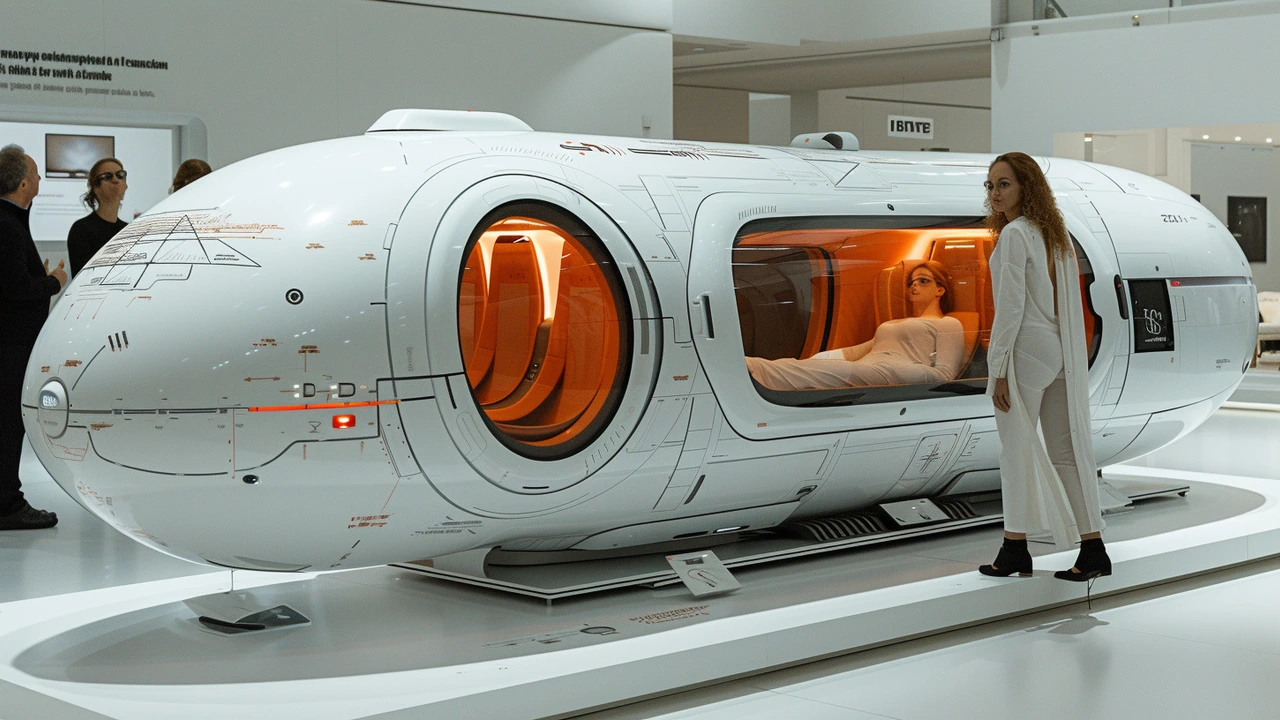High-Tech Architecture: The Game Changer in Modern Design
 Aug, 2 2023
Aug, 2 2023
Understanding the Core of High-Tech Architecture
So, it's Theodore here ready to delve into an adventurous journey through the world of high-tech architecture. If you're wondering what it is and how it's continuously shaping our cities and our lives, grab a cup of coffee because this subject calls for intense focus, preferably powered by a hefty dose of caffeine.
High-tech architecture, often referred to as Structural Expressionism or Late Modernism, champions the ethos of ‘form follows function’. This modernist principle epitomizes the essence of high-tech architecture, which is industrial in nature and sprung out as a response to the technological advancements seen during the 20th century. It's fascinating how architects perceive buildings as machines and create aesthetically breathtaking structures with that notion.
Let me make it a tad bit easier for you - If buildings had a version of Avengers, high-tech architecture would possibly be Tony Stark aka Iron Man. Sharp, cutting-edge, loaded with tech, and of course, incredibly good looking. Now that these architectural stalwarts have leaped from the pages of sci-fi novels to the real world, it's thrilling to see these 'architectural Avatars' in action, transforming the way we experience space and design.
Components of High-Tech Buildings
Entering the next chapter of our exploration, let's dissect high-tech architecture to understand its DNA. The emphasis here lies in highlighting structural elements over concealed ones. That's why you often see explicit displays of steel and glass shells, futuristic atriums, and striking use of color and lights. A popular example is the Pompidou Center in Paris designed by Richard Rogers and Renzo Piano, which exhibits its structural systems, ventilation ducts, and escalators on the exterior.
A personal snippet here, during my traveling days, I was fortunate enough to be in Paris and when I saw the Pompidou Center, I remember thinking to myself "Is this what a building on a tech-spree would look like?" It was different from the Parisian facades that I was used to but it was amazing.
When it comes to embracing the components of high-tech architecture, materials play a major role. And when we are talking about materials, steel and glass are the indisputable stars of the show. But their roles are not limited to the skin-deep glamour, they are as much about functionality as they are about aesthetics. Glass allows solar heat gain, thereby reducing artificial lighting needs, and steel contributes to the longevity of a building.
Exploring Innovation in High-Tech Architecture
If high-tech architecture is a song, then innovation is its rhythm. This architectural genre is all about stretching the limits of what's achievable, creating unique spaces, and forming a bridge with our future. Architects in this arena almost have a sixth sense for spotting technology and materials that could morph into the next big design element. And in this gamble of pushing boundaries, sometimes they even create technologies of their own, because why not!
Take, for example, the iconic Lloyds of London building, perhaps one of Richard Roger's most celebrated works. It was the first building in the UK to incorporate a system of external conduits for services like water and electricity, freeing up internal space. The building, like an intricate mechanical device, continually adapts and evolves, ensuring that it remains as future-ready as when it was conceived.
New innovations don't just stay on blueprint and render stages. We can see them coming to life, for instance, the sleek OLED lighting strips being integrated into building facades or the uses of nanotechnology for self-cleaning windows. Let's not forget how dynamic facades are becoming a thing now. Buildings are turning more reciprocal, responding to sunlight and wind direction, optimizing energy use. It's like witnessing a miracle of 'kinetic poetry' in stone, metal, and glass!
The Impact and Influence of High-Tech Architecture
Now coming down to the dessert (or the main course, depending on your culinary preferences), let's talk about the impacts and influences of high-tech architecture. These unconventional architectural marvels didn't just stop at being eye candies. They boldly crossed over to transform our urban landscapes and influenced other design genres. High-tech architecture asks important questions: What should architecture look like in a tech-dominant age? Can technology and nature coexist harmoniously within a design?
To me, high-tech architecture is a war cry for breaking free from conventions and embarking on a thrilling design adventure. The impact is so profound that it’s made its way into diverse fields such as interior design, graphic design and even cinema! Yes, you heard it right; we see imageries of high-tech architecture very often in sci-fi movies. Remember the intricate architectural details of Wakanda in 'Black Panther'? Their architecture speaks volumes of high-tech architectural elements. Makes you look at the movie and the genre with a new perspective, doesn't it?
High-tech architecture is not just about designing buildings; it's about creating technologically advanced, sustainable, and aesthetically compelling narratives that help us dream and inform us of potential futures. As I navigate through this mesmerizing world, the lines between technology, architecture, and art beautifully blur into a single form – High-Tech Architecture. And that, my friends, is the game-changer in modern design that we live amongst.